What is Solid State Active Cooling?
Solid-state active cooling technology that is more reliable and energy-efficient, and it can be used in a wide range of electronic devices, including portable devices.
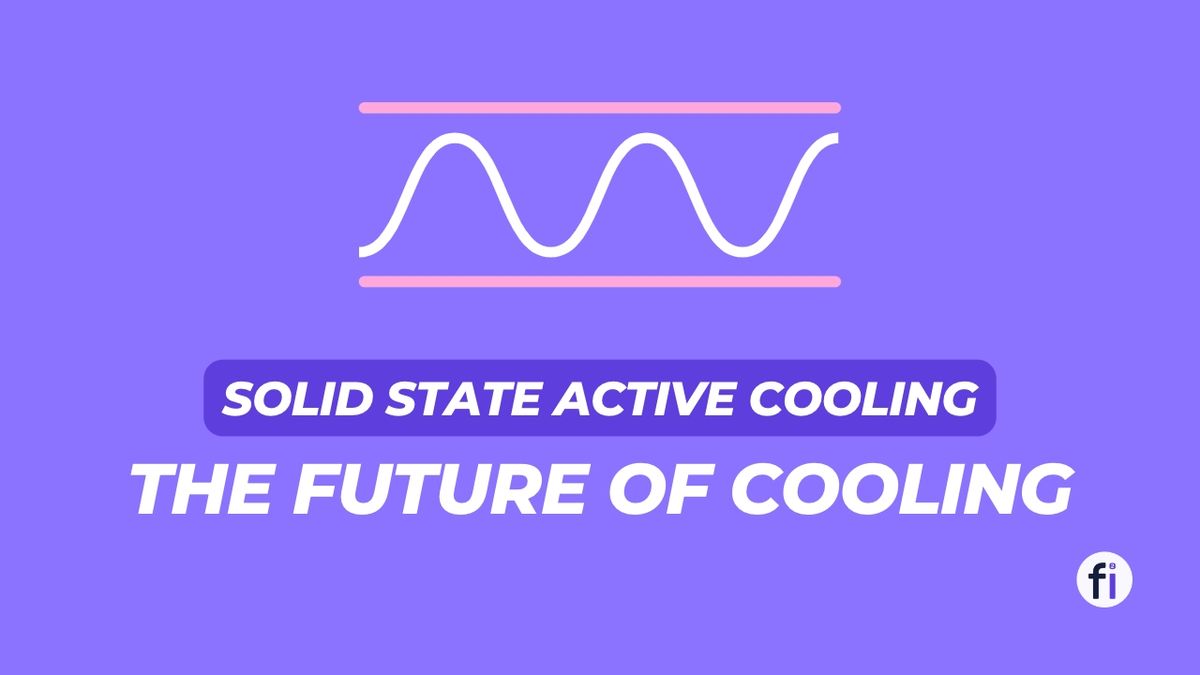
What is Solid State Active Cooling?
Solid state active cooling is a technology that uses the principles of thermoelectric cooling to achieve lower temperatures in electronic devices. Unlike traditional cooling methods that rely on refrigerants and mechanical components, solid-state cooling uses electricity to transfer heat from one side of a material to the other. This process is also known as the Peltier effect, named after the physicist Jean Charles Athanase Peltier, who discovered it in 1834.
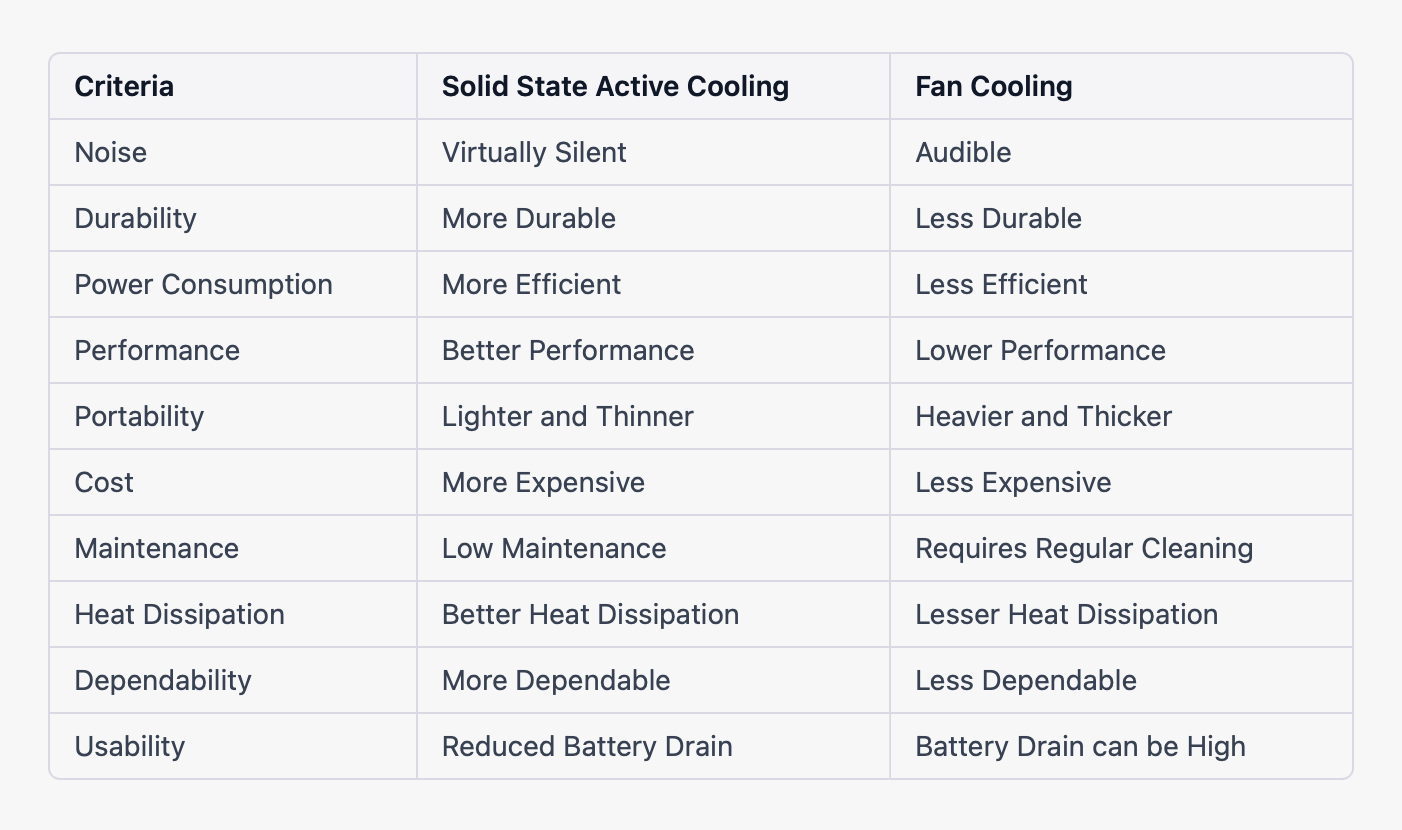
How Does Solid State Active Cooling Work?

The Peltier effect is based on the principle that when an electric current flows through a junction between two different materials, heat is either absorbed or released depending on the direction of the current. In a solid-state cooler, the two materials used are typically semiconductor materials, which have different properties that allow them to transfer heat in opposite directions.
The basic structure of a solid-state cooler consists of a series of semiconductor junctions sandwiched between two metal plates. When a direct current is applied to the junctions, one side of the cooler becomes cooler while the other side becomes hotter. This temperature difference can be used to transfer heat away from the device that needs to be cooled.
This temperature difference can be used to cool an object or system. The Peltier effect is a reversible process, which means that it can also be used to heat an object or system. This makes it a versatile technology that can be used for both cooling and heating applications.
Solid State Active Cooling is the Future?
Solid-state active cooling is rapidly becoming a popular choice for many applications, due to its many benefits over traditional cooling methods. One of the main advantages of SSAC is its ability to provide precise temperature control, which is important for many electronic and industrial applications.
Another advantage of SSAC is its power efficiency, and compactness, which makes it ideal for use in small, confined spaces.
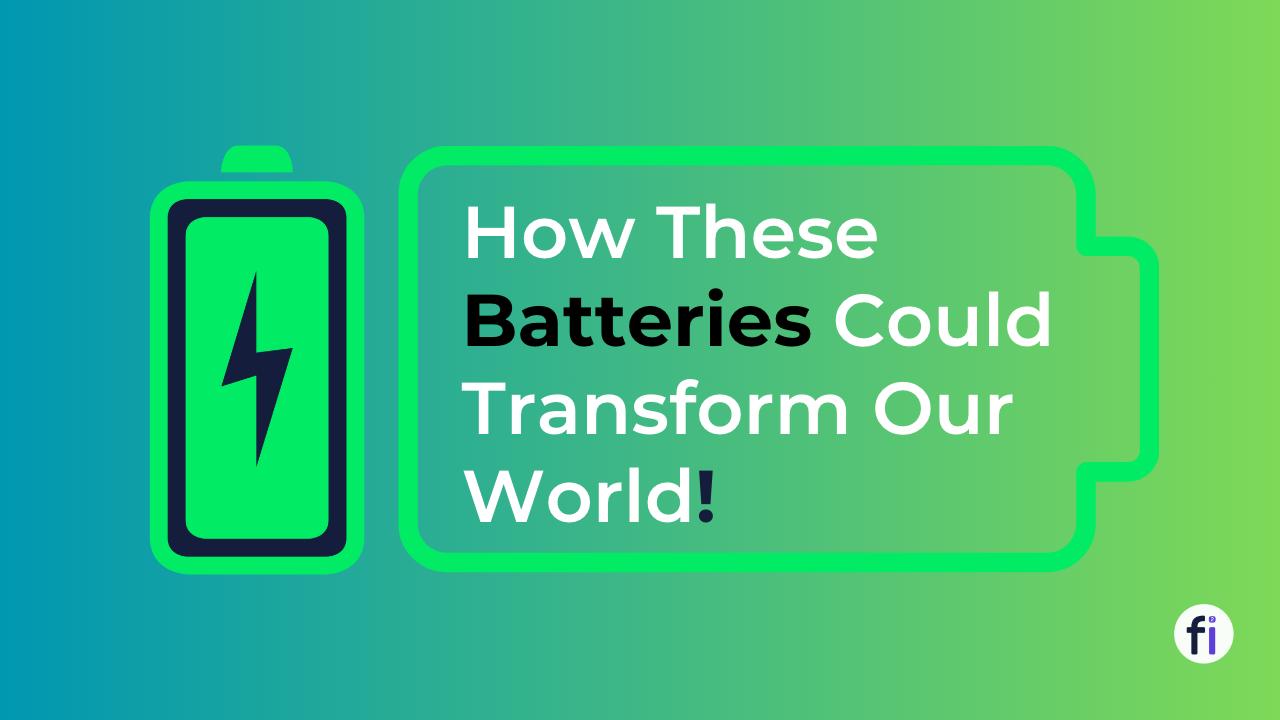
Power Efficiency is the Main Factor
Traditional cooling methods, such as air or liquid cooling, can be very energy-intensive, bulky, and difficult to install in tight spaces and they can consume a large amount of power. SSAC, on the other hand, is much more energy-efficient, and it can help to reduce power consumption and costs.
This makes it a versatile technology that can be used for both cooling and heating applications.
Another reason that SSAC is so power-efficient is that it can be used to cool small areas or specific components, rather than cooling an entire system. This allows for a more targeted and efficient use of power.
Solid-state active cooling (SSAC) technology can be a key factor in increasing performance per watt, as it can reduce the power consumption required for cooling, allowing more power to be dedicated to the device's performance.
Advantages of Solid State Active Cooling
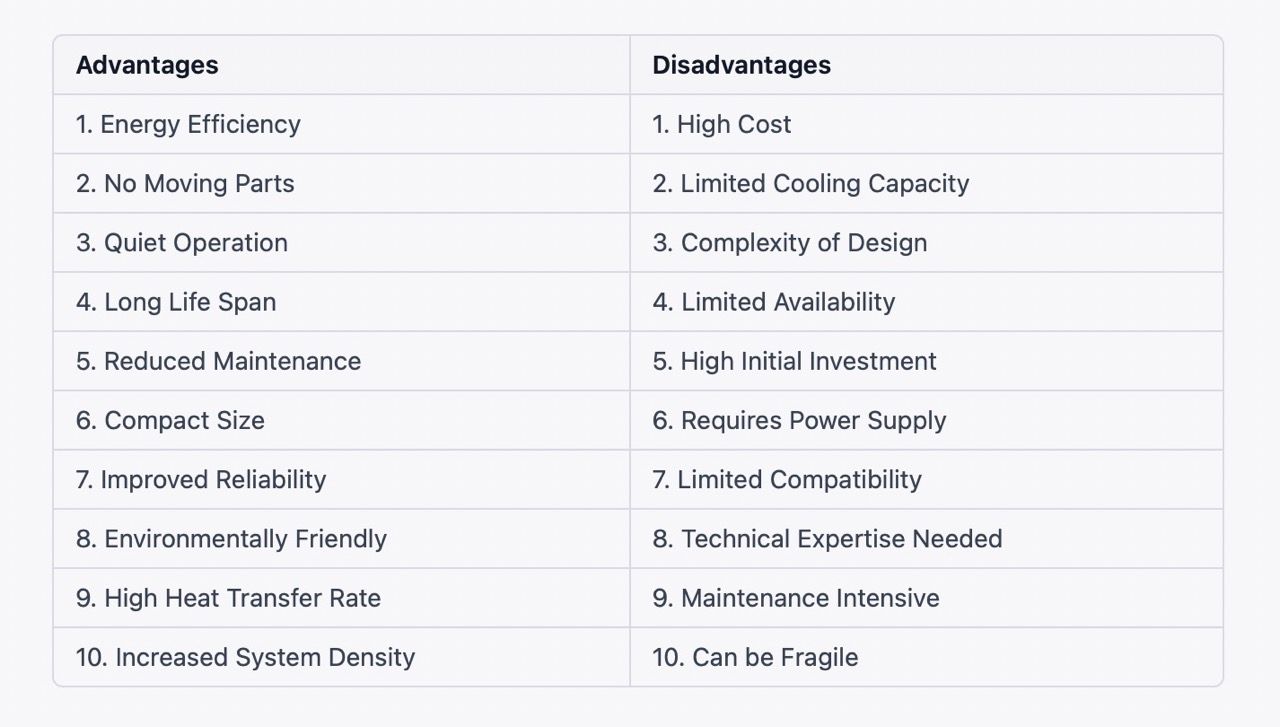
Solid state active cooling offers several advantages over traditional cooling methods. First, it is a solid-state technology that does not require any moving parts or refrigerants, making it more reliable and maintenance-free. Second, it is much smaller and lighter than traditional cooling methods, making it ideal for portable electronic devices.
Another advantage of solid state active cooling is that it is more energy-efficient than traditional cooling methods. This is because it does not rely on compressors and other mechanical components that consume a lot of energy. Instead, it uses only electricity to transfer heat from one side of the cooler to the other.
Disadvantages of Solid State Active Cooling
- Expensive: SSAC can be more expensive than traditional cooling methods, which may make it less appealing for some applications.
- Not suitable for all applications: SSAC may not be suitable for all cooling applications, and it may not be as efficient as traditional cooling methods in certain situations.
- Maintenance: SSAC may require more maintenance than traditional cooling methods, which may add to the cost of ownership.
- Limited heat dissipation capacity: SSAC is not able to dissipate heat as well as traditional cooling methods, which may make it less suitable for high-power applications.
- Limited scalability: SSAC can only cool a small area or specific component, which may make it less suitable for large-scale applications.
Applications of Solid State Active Cooling
Solid state active cooling is used in a variety of electronic devices that require efficient cooling. One of the most common applications is in computer processors, which generate a lot of heat and require efficient cooling to prevent overheating. Solid state active cooling can be used to cool processors, graphics cards, and other components in desktop computers, laptops, and servers.
Another application of solid state active cooling is in LED lighting. LEDs generate heat as they operate, and if not cooled properly, their lifespan can be significantly reduced. Solid state active cooling can be used to cool LED lights, making them more efficient and longer-lasting.
Solid state active cooling can also be used in other electronic devices such as smartphones, cameras, and audio equipment. By using solid-state cooling, these devices can operate more efficiently and reliably, without the need for bulky and energy-consuming cooling systems.

Challenges and Limitations of Solid State Active Cooling
Despite its many advantages, solid state active cooling also has some challenges and limitations. One of the main challenges is that it can only achieve a limited amount of cooling. This is because the Peltier effect is not very efficient, and a lot of energy is lost as heat during the cooling process.
Another challenge of solid state active cooling is that it can be expensive compared to traditional cooling methods. This is because it requires specialized semiconductor materials and manufacturing processes, which can be costly.
Solid state active cooling also has some limitations in terms of the types of devices it can be used in. It is most effective in devices that generate a moderate amount of heat, and it may not be suitable for devices that generate a lot of heat, such as high-performance servers.

FAQs
What is solid-state active cooling and how does it work?
Solid-state active cooling uses thermoelectric modules to transfer heat from a heat source to a heat sink based on the Peltier effect. It's method that's compact and reliable with no moving parts, making it ideal for where space and weight are critical. However, it has lower efficiency and cooling capacity.
How is solid-state active cooling different from traditional cooling methods?
Traditional cooling methods, such as air cooling, use passive cooling techniques, such as convection, to dissipate heat from the components. Solid-state active cooling, on the other hand, uses active cooling methods that are more efficient and effective at removing heat. This results in better temperature control and more reliable performance for electronic components.
What are the benefits of using solid-state active cooling for electronic components?
Solid-state active cooling provides several benefits for electronic components, including improved reliability, longer lifespan, and better performance. It also helps to reduce the risk of thermal failure, which can cause serious damage to the components.
How much does a solid-state active cooling system cost?
The cost of a solid-state active cooling system varies depending on factors such as the type of components, the size of the system, and the specific features and capabilities offered. Prices can range from a few hundred dollars to several thousand dollars for high-end systems.
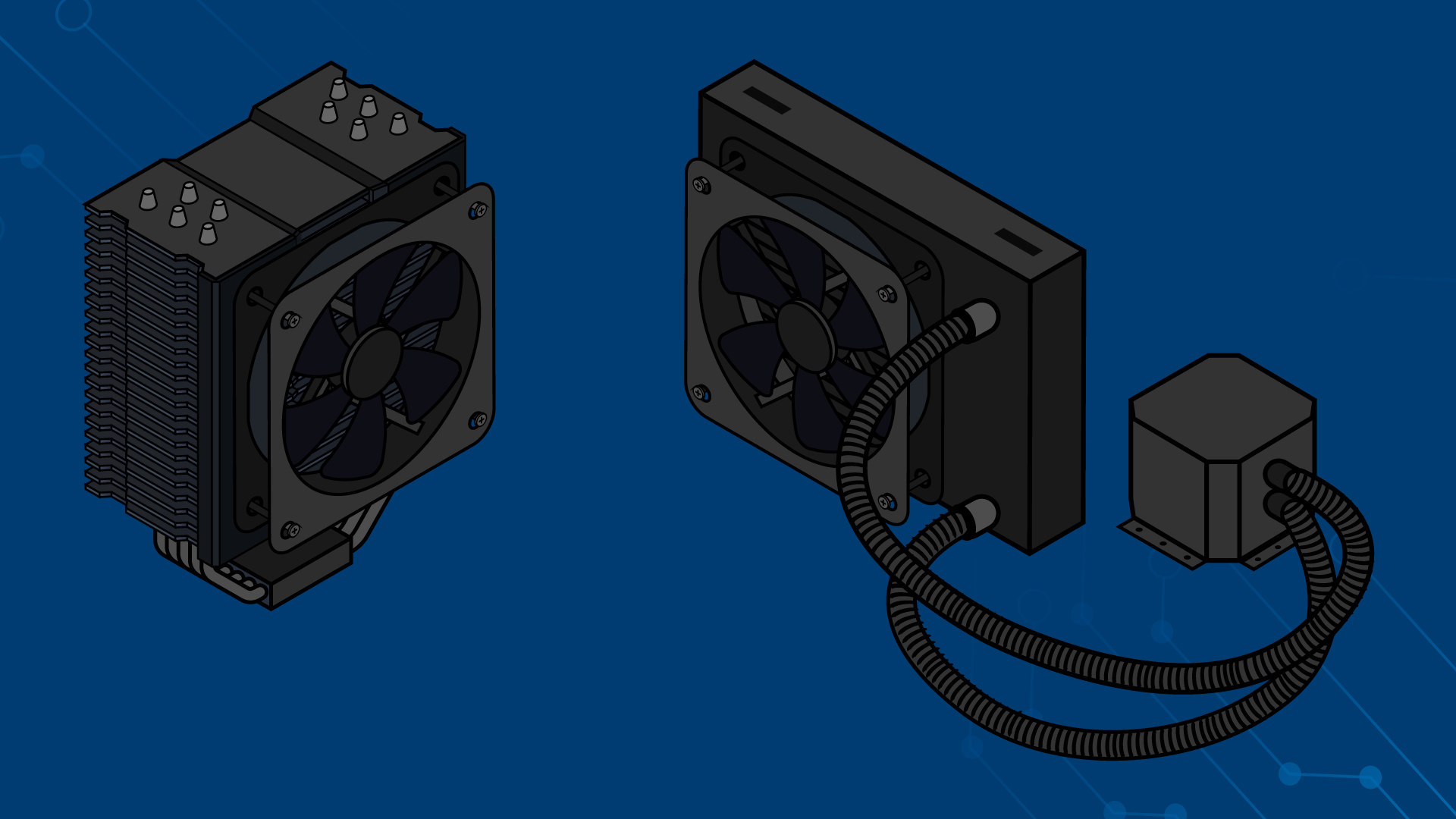
Reference Headlines for this post:
- "Revolutionizing Cooling Technology: The Rise of Solid State Active Cooling"
- "Active Cooling for High-Performance Systems: Understanding Solid State Technology"
- "Solving Heat Management Challenges with Solid State Active Cooling"
- "The Future of Cooling: How Solid State Active Cooling is Changing the Game"
- "Efficiency and Precision: The Benefits of Using Solid State Active Cooling"
- "From Data Centers to Electronics: The Wide Range of Applications for Solid State Active Cooling"
- "Solid State Active Cooling: A Breakthrough in Temperature Control Technology"
- "Why Solid State Active Cooling is the Next Big Thing in Cooling Systems"
- "The Advantages of Solid State Active Cooling over Traditional Cooling Methods"
- "Solid State Active Cooling: The Key to Keeping High-Power Systems Running Cool and Efficient"


